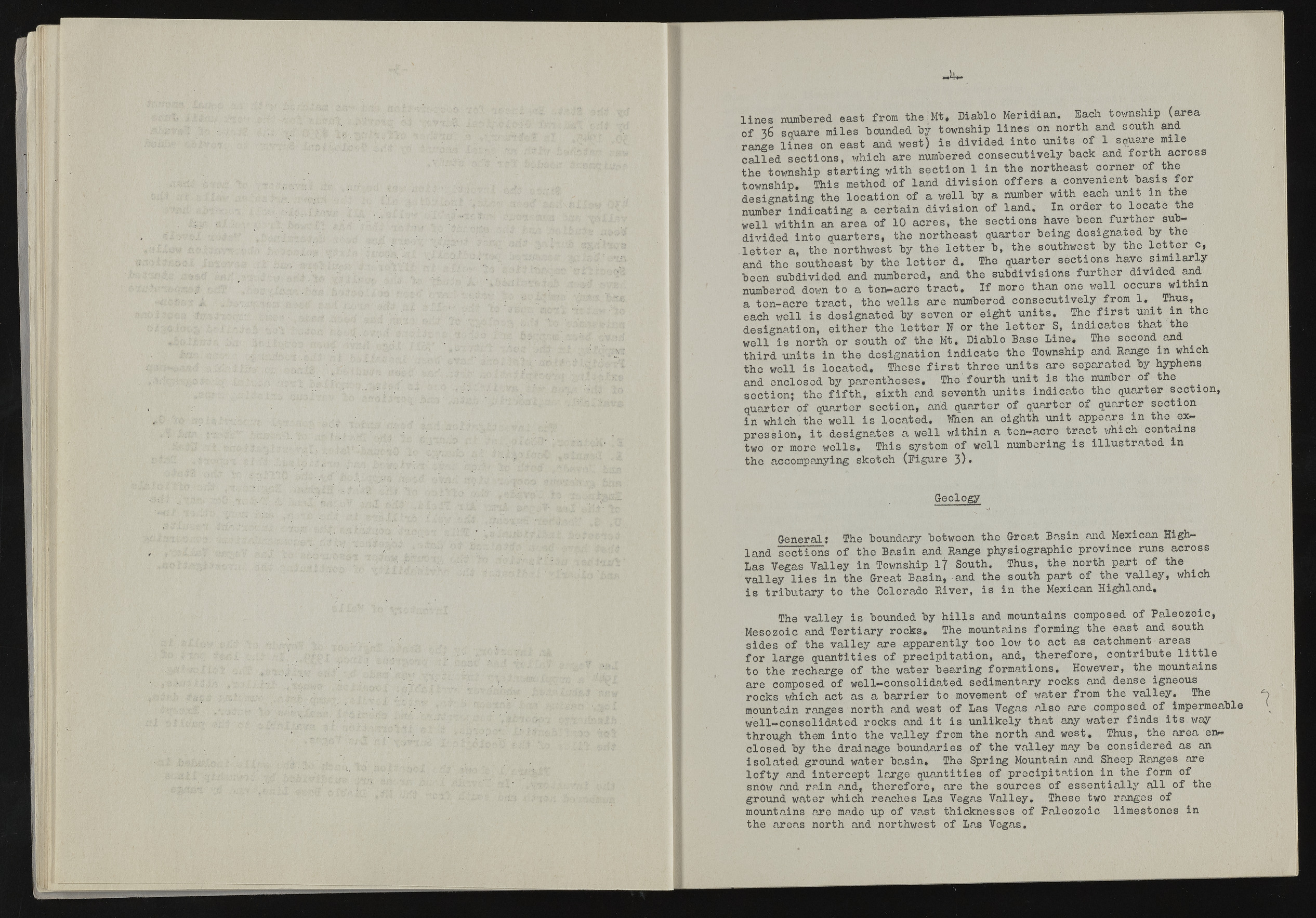Copyright & Fair-use Agreement
UNLV Special Collections provides copies of materials to facilitate private study, scholarship, or research. Material not in the public domain may be used according to fair use of copyrighted materials as defined by copyright law. Please cite us.
Please note that UNLV may not own the copyright to these materials and cannot provide permission to publish or distribute materials when UNLV is not the copyright holder. The user is solely responsible for determining the copyright status of materials and obtaining permission to use material from the copyright holder and for determining whether any permissions relating to any other rights are necessary for the intended use, and for obtaining all required permissions beyond that allowed by fair use.
Read more about our reproduction and use policy.
I agree.Information
Digital ID
Permalink
Details
Member of
More Info
Rights
Digital Provenance
Publisher
Transcription
lines numbered, east from the Mt, Diablo Meridian. Bach township (area of 36 square miles bounded by township lines on north and south and range lines on east and west) is divided into units of 1 square mile called sections, which are numbered consecutively back and forth across the township starting with section 1 in the northeast corner of the township. This method of land division offers a convenient basis for designating the location of a well by a number with each unit in the number indicating a certain division of land. In order to locate the well within an area of 10 acres, the sections have been further subdivided into quarters, the northeast quarter being designated by the letter a, the northwest by the letter b, the southwest by the letter c, and the southeast by the letter d. The quarter sections have similarly been subdivided and numbered, and the subdivisions further divided and. numbered down to a ton-acre tract. If moro than one well occurs within a ton-acre tract, the wells are numbered consecutively from 1.^ Thus, each well is designated by seven or eight units, The^first unit in the designation, either the letter IT or the letter S, indicates that the well is north or south of the Mt. Diablo Base Line# The second and third units in the designation indicate the Township and Range in which the well is located. These first three units are separated by hyphens and enclosed by parentheses# The fourth unit is the number of the section? the fifth , sixth and seventh units indicate the quarter section, quarter of quarter section, and quarter of quarter of quarter section in which the well is located. When an eighth unit appears in the expression, it designates a well within a ten-acre tract which contains two or more wells. This system of well numbering is illustrated in the accompanying sketch (figure 3)* Geology General? The boundary between the Great Basin and Mexican Highland sections of the Basin and Range physiographic province runs across Las Vegas Valley in Township i t South. Thus, the north part of the valley lies in the Great Basin, and the south part of the valley, which is tributary to the Colorado River, is in the Mexican Highland, The valley is bounded by h ills and mountains composed of Paleozoic, Mesozoic and Tertiary rocks. The mountains forming the east and south sides of the valley are apparently too low to act as catchment areas for large quantities of precipitation, and, therefore, contribute lit t le to the recharge of the water bearing formations. However, the^mountains are composed of well—consolidated sedimentary rocks and dense igneous rocks which act as a barrier to movement of water from the valley. The mountain ranges north and west of Las Vegas also are composed of impermeable well-consolidated rocks and it is unlikely that any water finds its way through them into the va-lley from the north and west. Thus, the area enclosed by the drainage boundaries of the valley may be considered as an isolated ground water basin. The Spring Mountain and Sheep Ranges are lofty and intercept large quantities of precipitation in the form of snow and rain and, therefore, are the sources of essentially all of the ground water which reaches Las Vegas Valley. These two ranges of mountains are made up of vast thicknesses of Paleozoic limestones in the aren.s north and northwest of La„s Vegas.

